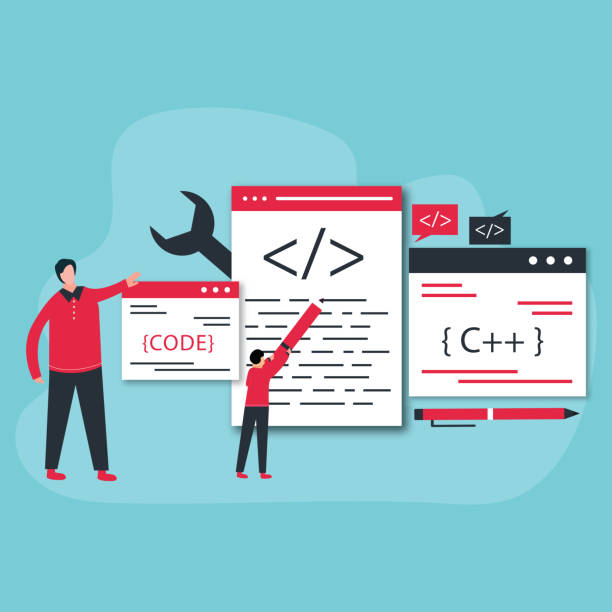A Step-by-Step Guide: Easy Methods to get A Google API Key
페이지 정보
작성자 Constance Edmon… 댓글 0건 조회 44회 작성일 24-07-30 23:41본문
 If you’re trying to integrate Google companies into your webpage or software, you’ll want a Google API key. This key acts as a singular identifier that permits you to entry and make the most of numerous Google APIs. Whether you’re building a mapping application, utilizing Google Drive, or implementing any other service supplied by Google, having an API key is important. In this text, we'll stroll you through the step-by-step technique of acquiring your own Google API key. Before we dive into the process of buying a Google API key, let’s take a moment to grasp what it truly is. An API (Application Programming Interface) is essentially a algorithm and protocols that allows different software program applications to communicate with one another. Within the case of Google APIs, they supply developers with entry to numerous functionalities and data provided by Google’s services. For those who don’t have an account yet, create one by following the prompts supplied. Together with your mission created, it’s time to enable the particular APIs and companies you would like to use.
If you’re trying to integrate Google companies into your webpage or software, you’ll want a Google API key. This key acts as a singular identifier that permits you to entry and make the most of numerous Google APIs. Whether you’re building a mapping application, utilizing Google Drive, or implementing any other service supplied by Google, having an API key is important. In this text, we'll stroll you through the step-by-step technique of acquiring your own Google API key. Before we dive into the process of buying a Google API key, let’s take a moment to grasp what it truly is. An API (Application Programming Interface) is essentially a algorithm and protocols that allows different software program applications to communicate with one another. Within the case of Google APIs, they supply developers with entry to numerous functionalities and data provided by Google’s services. For those who don’t have an account yet, create one by following the prompts supplied. Together with your mission created, it’s time to enable the particular APIs and companies you would like to use.
Each API requires separate enabling. To do that, go back to the dashboard and click on on "APIs & Services" from the left-hand menu. Then select "Library." Here you will discover a listing of out there APIs that can be enabled on your mission. To enable an API or service, seek for it using the search bar offered. Once found, click on on it and then select "Enable." Some APIs might require extra configuration or billing info, so remember to follow any prompts that seem. Now that your desired APIs and companies are enabled, it’s time to generate your API key. From the left-hand menu, click on "Credentials." On the Credentials web page, click on "Create Credentials" and choose "API Key." This will generate your API key. Be certain that to keep this key safe because it grants access to your project’s sources. You possibly can restrict the usage of your API key by specifying which websites, IP addresses, or functions are allowed to use it. This ensures that only authorized entities can access your APIs. To set restrictions, go back to the Credentials web page and click on on the pencil icon subsequent to your API key. From here, you'll be able to configure the suitable restrictions based mostly in your needs. Obtaining a Google API key is a simple process that entails making a project within the Google Cloud Console, enabling the specified APIs and providers, and generating an API key. Remember to keep your API key safe and consider implementing restrictions for added safety. With your Google API key in hand, you’ll have the ability to unlock highly effective functionalities and integrate numerous Google services into your website or software seamlessly.
As people, we use natural language to speak through different mediums. Natural Language Processing (NLP) is mostly known because the computational processing of language utilized in everyday communication by humans. NLP has a normal scope definition, as the sphere is broad and continues to evolve. NLP has been round for the reason that 1950s, beginning with automatic translation experiments. Back then, researchers predicted that there would be full computational translation in a three to 5 years time frame, but because of the lack of computer energy, the time-frame went unfulfilled. NLP has continued to evolve, and most not too long ago, with the help of Machine Learning instruments, increased computational energy and huge data, we've seen rapid development and implementation of NLP tasks. Nowadays many business merchandise use NLP. Its real-world makes use of vary from auto-completion in smartphones, private assistants, search engines like google, voice-activated GPS techniques, and the checklist goes on. Python has become essentially the most most well-liked language for NLP due to its great library ecosystem, platform independence, and ease of use.
Especially its intensive NLP library catalog has made Python more accessible to builders, enabling them to analysis the sphere and create new NLP tools to share with the open-source group. In the next, let's find out what are the widespread actual-world uses of NLP and what open-supply Python instruments and libraries are available for the NLP duties. OCR is the conversion of analog text into its digital type. By digitally scanning an analog model of any textual content, OCR software program can detect the rasterized text, isolate it and at last match every character to its digital counterpart. OpenCV-python and Pytesseract are two main Python libraries generally used for OCR. These are Python bindings for OpenCV and Tesseract, respectively. OpenCV is an open-supply library of computer vision and machine studying, whereas Tesseract is an open-source OCR engine by Google. Real-world use circumstances of OCR are license plate reader, the place a license plate is identified and remoted from a photograph image, and the OCR activity is performed to extract license quantity.
A single-board laptop, such because the Raspberry Pi loaded with a digital camera module and the OCR software program, makes it a viable testing platform. Speech recognition is the task of converting digitized voice recordings into text. The more practical systems use Machine Learning to train models and have new recordings evaluate against them to increase their accuracy. SpeechRecognition is a Python library for performing speech recognition online or offline. Text-to-Speech is an artificially generated voice ready to speak text in real-time. Some synthesized voices available today are very near human speech. Text-to-Speech software integrates accents, intonations, exclamation, and nuances permitting digital voices to carefully approximate human speech. Several Python libraries can be found for TTS. Pyttsx3 is a TTS library that performs textual content-to-speed conversion offline. TTS is a Python library that performs TTS with google search with python Translate's text-to-speech API. TTS is a text-to-speech library that is driven by the state-of-the-artwork deep studying fashions. NLP can extract the sentiment polarity and objectivity of a given sentence or phrase by implementing the subtasks mentioned above with other specialised algorithms.
- 이전글วิธีการดาวน์โหลดวิดีโอ Tiktok ไม่มีลายน้ำ บน Android 24.07.31
- 다음글mega darknet 24.07.30
댓글목록
등록된 댓글이 없습니다.



